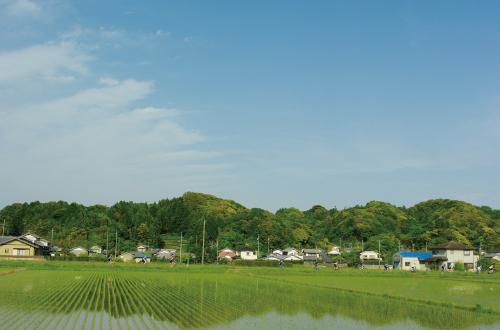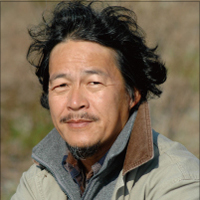



Impressions, interactions, and sightseeing in the city of Kakegawa
In recent years, the arrangement of mass production and mass consumption has collapsed, and there are ever more minimalists who rid themselves of unnecessary belongings to live on only the bare necessities, as well as simplists who live plainly and simply. This trend is the same in tourism as well (with the exception of shopaholic tourists from China), and while group travel typified by bus tours has gradually declined, there is a growing number of travelers with a clear sense of purpose who know what they want to eat, want to see, want to experience, and want to feel.
Modern travelers do not want to spend time or money on things that they feel are unnecessary. They do not even show interest in these things. Honestly, they are difficult customers for the people serving them. However, it is a welcome change for Kakegawa, which aims to utilize “things, people, and experiences”, assets unique to the area. Regional personality or regional brand is, in a sense, a minimalist tourism asset as opposed to a mass tourism asset, and we feel that its value as regional heritage will keep growing in the future.
This is only my personal opinion, but I have traveled to 70 countries around the world just to catch a single fish. I wasn’t trying to catch some particularly rare or large fish. For an avid fisher like me, it might “just be a plain fish, but it is good enough to be worth catching”. Everyone has a different purpose for travel. Many people travel just to catch one fish. But it’s not only fishing. There are skiers looking for powder snow, surfers looking for big waves, gourmands pursuing the mystery of food, and alpinists who stake their lives on unconquered peaks. The reasons for travel are many and varied, as are the values people have regarding travel.
I was surprised by the atogake yakisoba (fried noodles with sauce put on last) at Yokosuka in the city, as well as sweet ramen noodles, black hanpen (a cake of ground fish combined with starch and steamed), and oden (dumpling like food stewed in a thin soy soup) sold at a Japanese snack store. I was moved by the vast tea fields stretching in every direction, the rolling hills that look like ancient burial mounds, and the mikan orange trees heavy with fruit in people’s gardens. The friends I shared sake with in the pub and rode my bicycle with, the green tea I was served on the veranda of their home... these are all cherished memories of my travels.
* *
The other day, Kakegawa came up in conversation in a pub in Sapporo.
When asked “What prefecture is Kakegawa in?” only a few answered “Shizuoka Prefecture!” They were surprised to find that there are direct flights from New Chitose Airport to Mt. Fuji Shizuoka Airport. I wish I could tell them “You better learn your geography!”, but even I had mixed up Kakegawa, Shizuoka Prefecture with Okegawa, Saitama Prefecture until 6 years ago. I guess I’m the one who needs to study geography!
As if I were a sudden Kakegawa Tourism Ambassador, I started boasting about how great this city is to everyone present, saying “Kakegawa has a castle tied to the feudal lord Yamauchi Kazutoyo, Kodama Shinkansen trains stop there, and there is a Shin-Tomei Expressway interchange. The beauty products company Shiseido has its company museum in Kakegawa, and there is the Nemunoki Gakuen school for disabled children established by Mariko Miyagi, as well as Tsumagoi Resort where so many musicians got their start, and also Mikumano Shrine famous as a destination to pray for safe childbirth, not to mention deeper aspects of the city like Chagusaba, the tea fields cultivated with agricultural techniques that earned its recognition as globally important agricultural heritage site.
People take it for granted in Kakegawa, but in Hokkaido it’s practically a lost world. There are plenty of people here who have been to Korea or Hawaii, but have never been to and don’t particularly want to go to Shizuoka Prefecture, never mind Kakegawa. This doesn’t apply to just people from Hokkaido; I’m sure the same could be said of people from Okinawa as well. People from the Kyushu and Tohoku regions are probably the same to some extent. Forget about pub when spreading information to the general public on the Internet, I think it might be necessary to assume that people don’t know about Kakegawa rather than assume they do, and add “Shizuoka Prefecture” or “Enshu” in front of the name of the city.

Photo Journalist: Chikyuu-jin Team Leader
Masayuki ZammaMasayuki Zamma was born in Hokkaido in 1953, and his blood type is AB. He loves traveling to remote destinations and fly fishing. With his rod and camera in hand, he has traveled to 71 countries, appearing in “Anglers Gallery” on NHK (BS2), “Fishing Vision” and “TABI CHANNEL” broadcast by SKY PerfecTV!, and “Hot@Asia” on NHK (BS1). In the spring of 2010 he took heart surgery as an opportunity to end 38 years of living in Tokyo and make a new start in Hokkaido. His published works include “Why I Take A Rod On My Travels”, “World Fishing Travels”, and “Fly Fishing High!”. While attempting new local lifestyle tourism in Hokkaido, he visits Shizuoka frequently as an advisor on guided tourism and “sixth industrialization” (a government policy encouraging agricultural producers to branch out into other industries). He lives in Sapporo, Hokkaido.
掛川交流型ツーリズム ガイドプログラム

